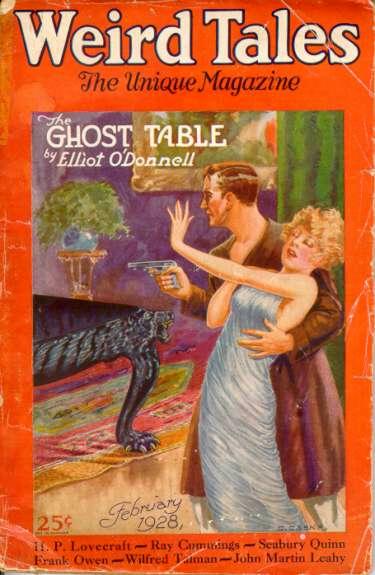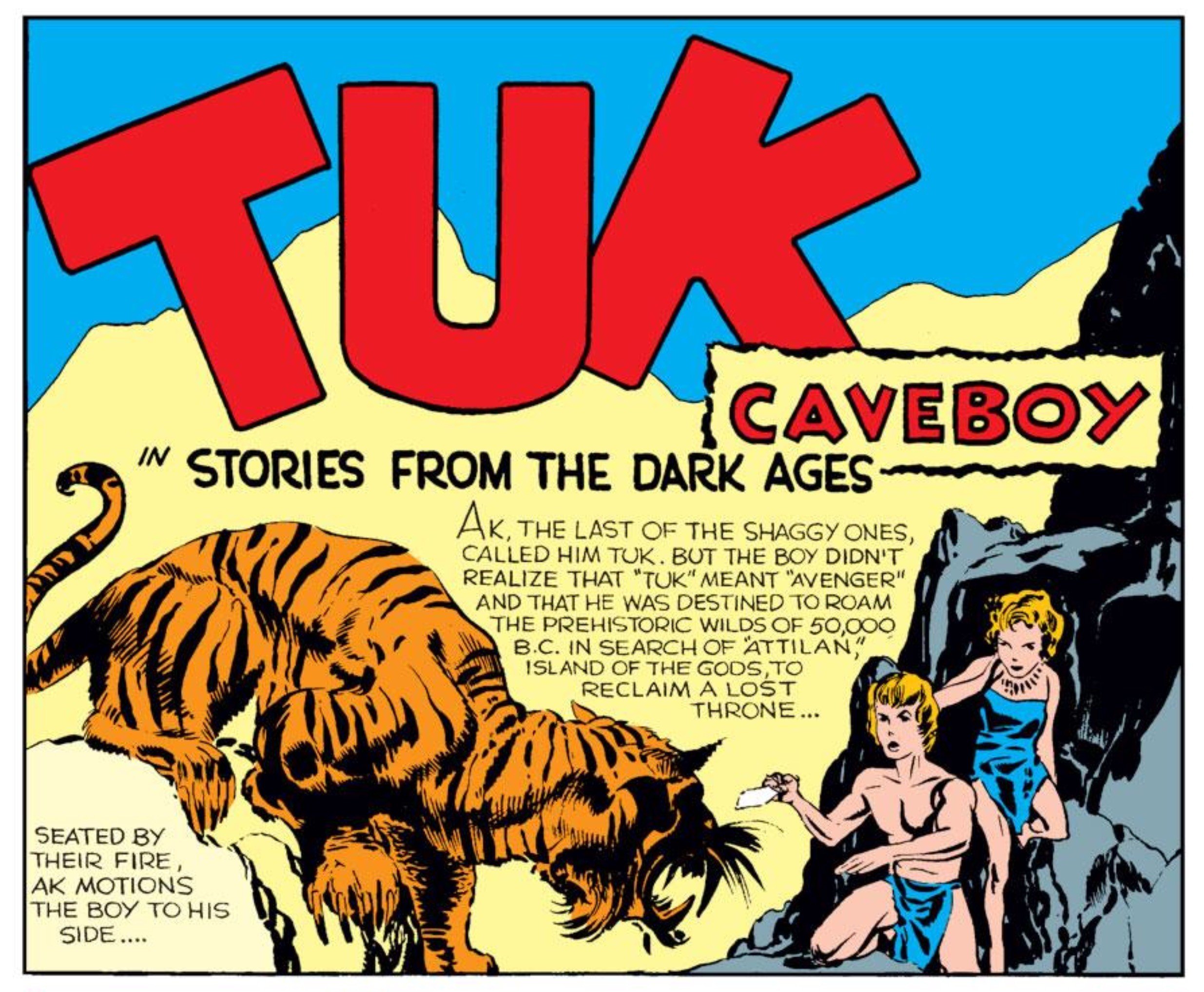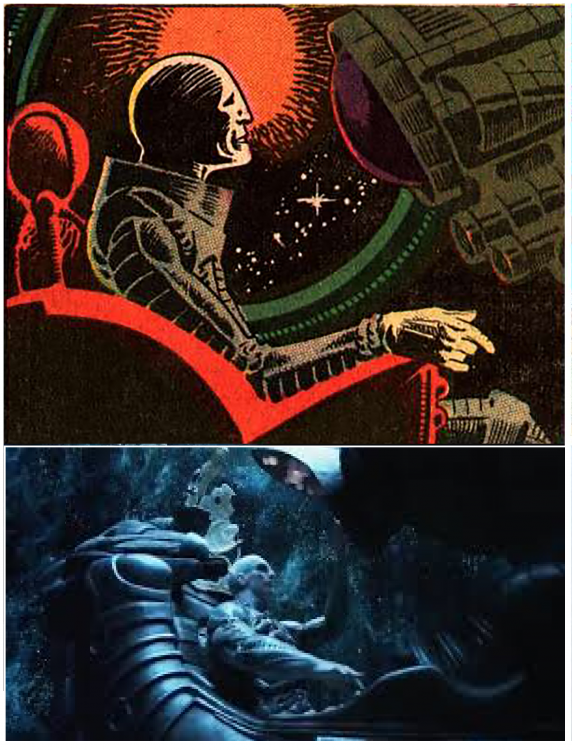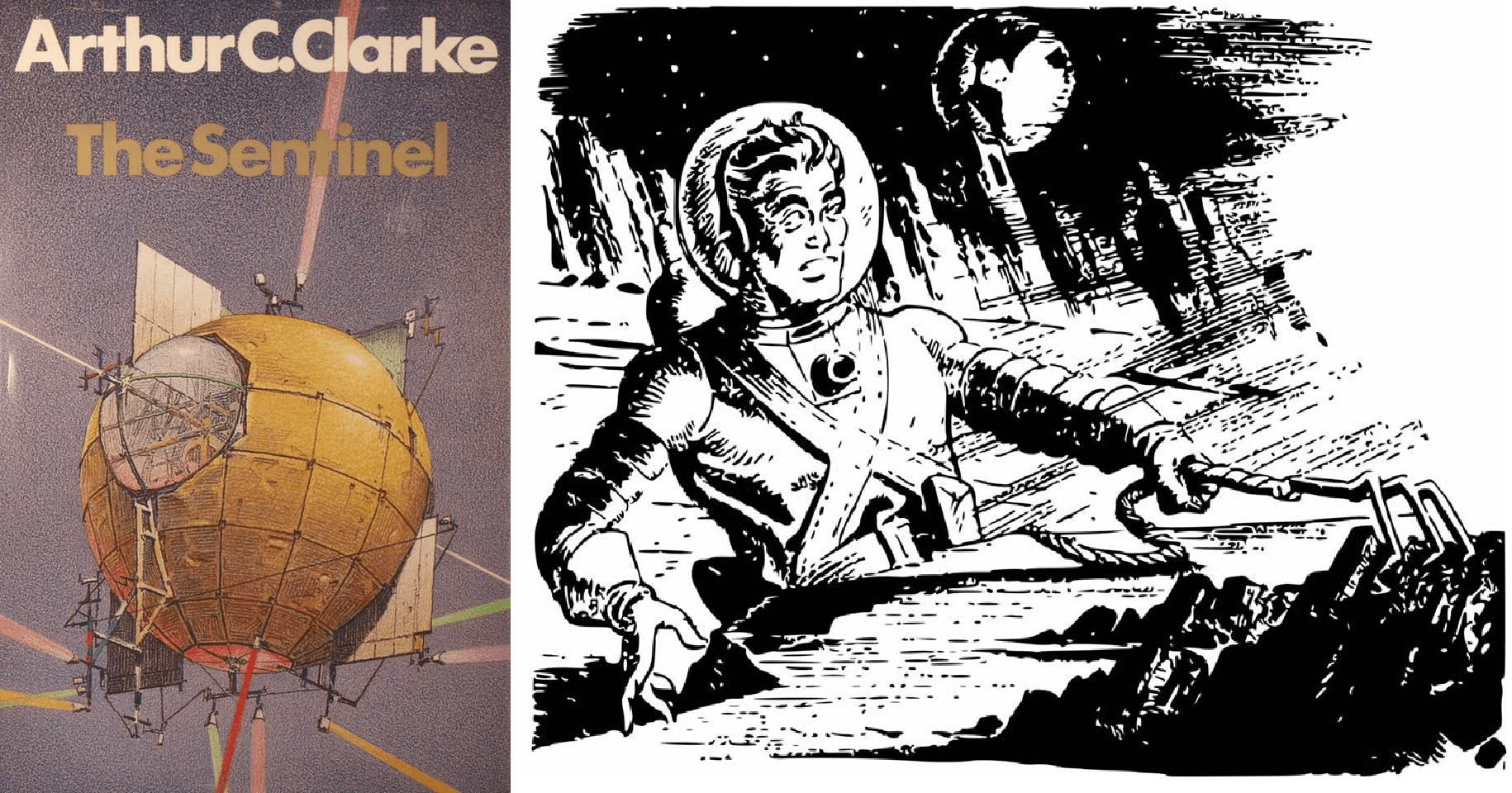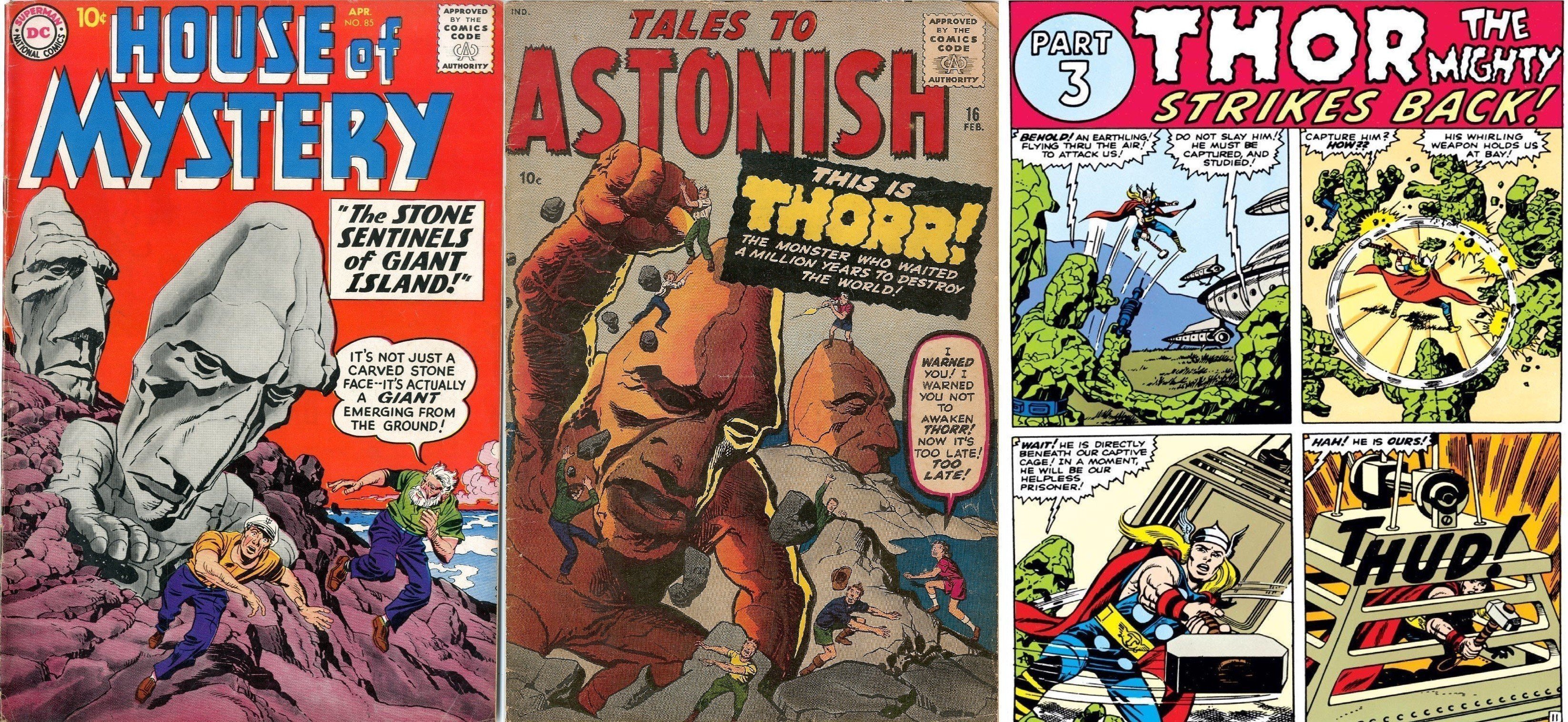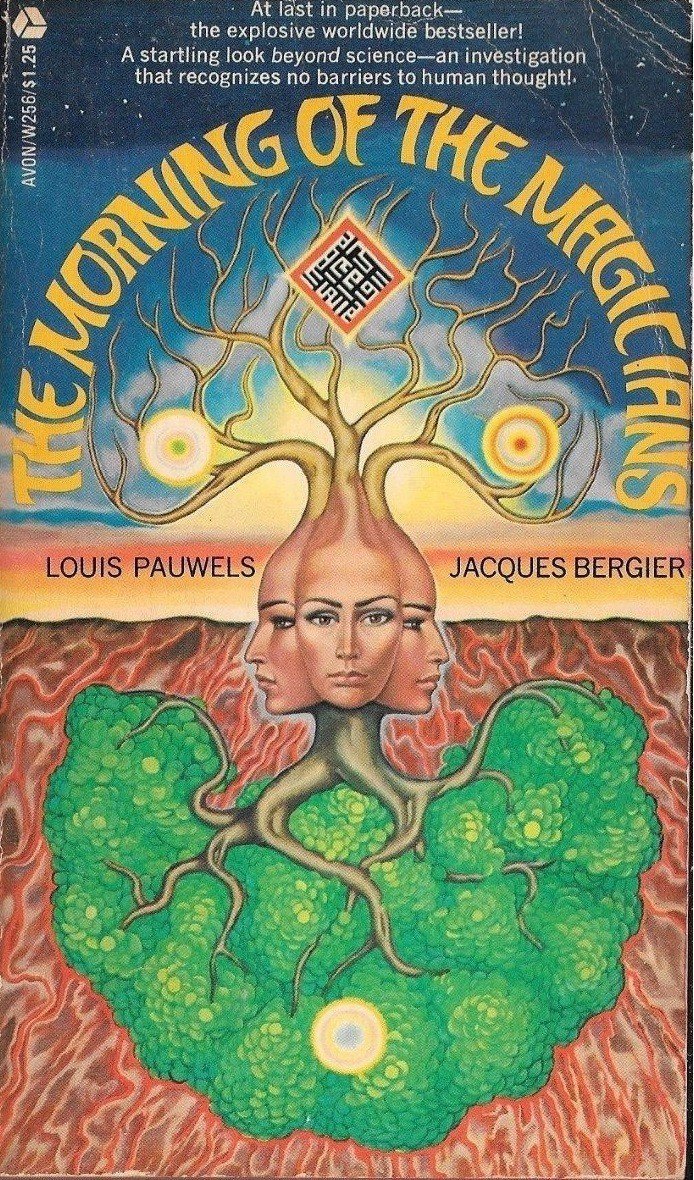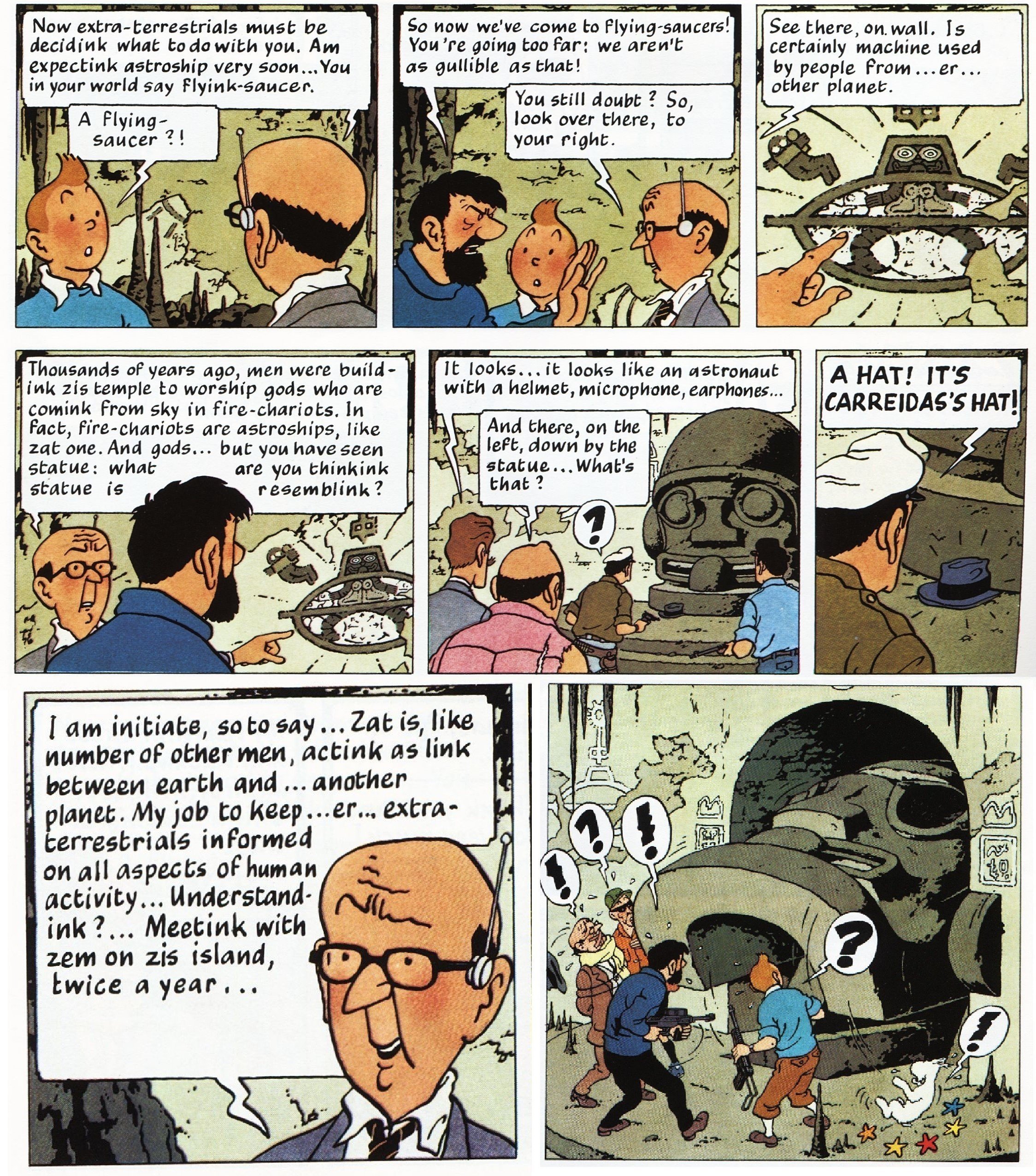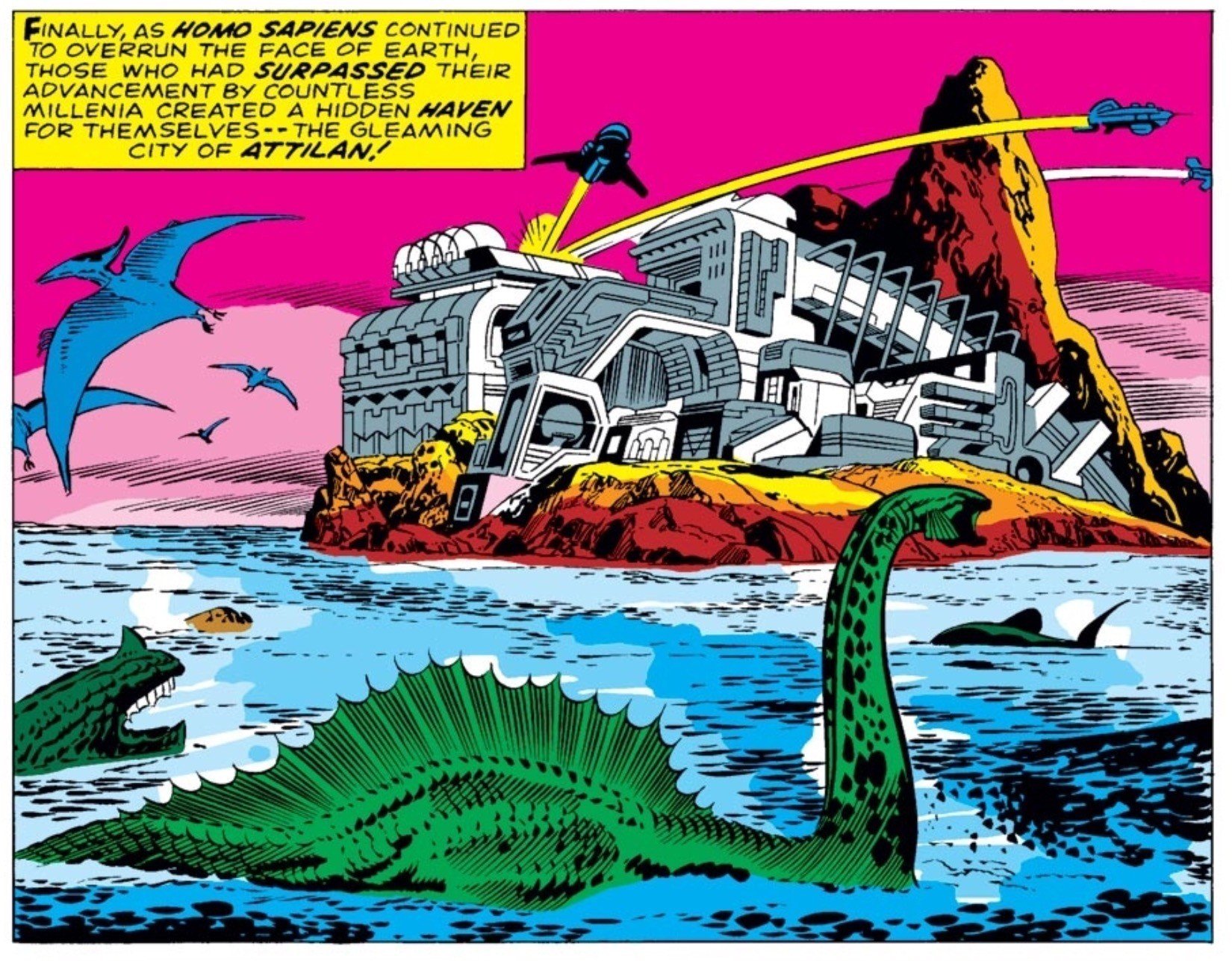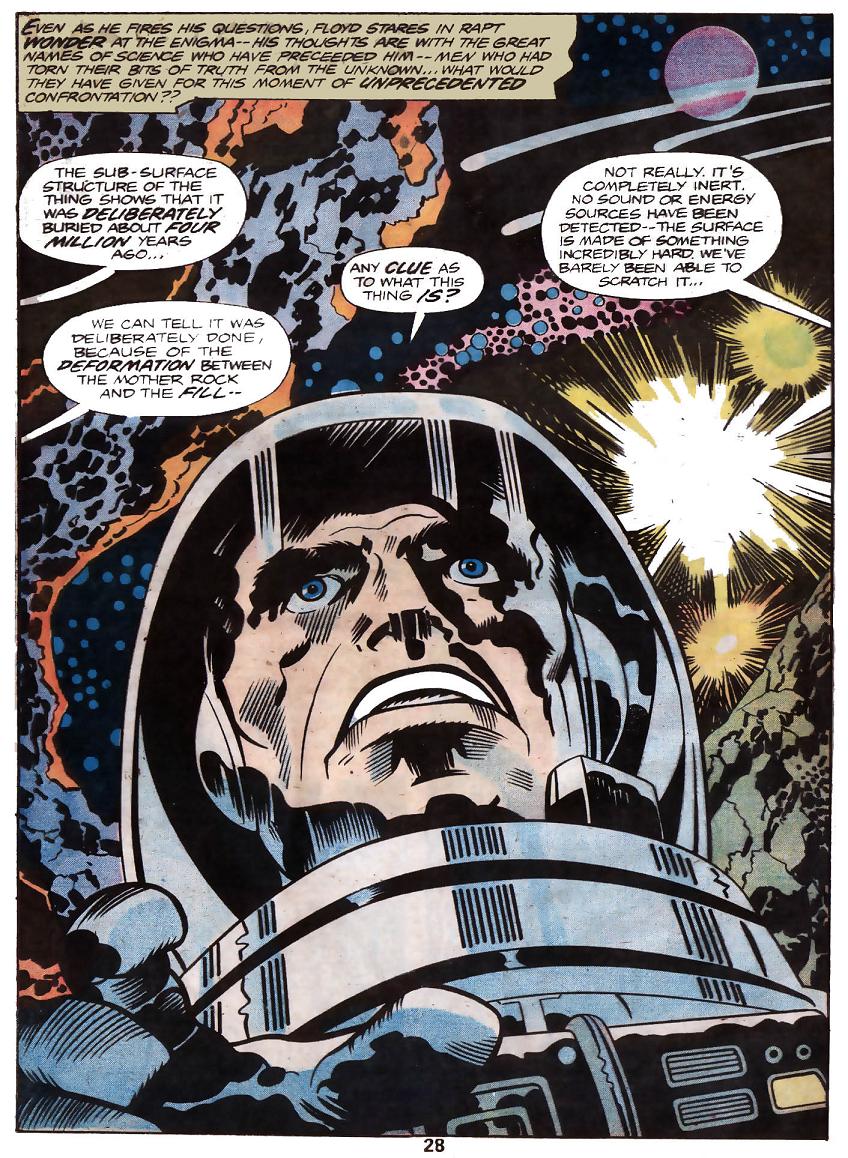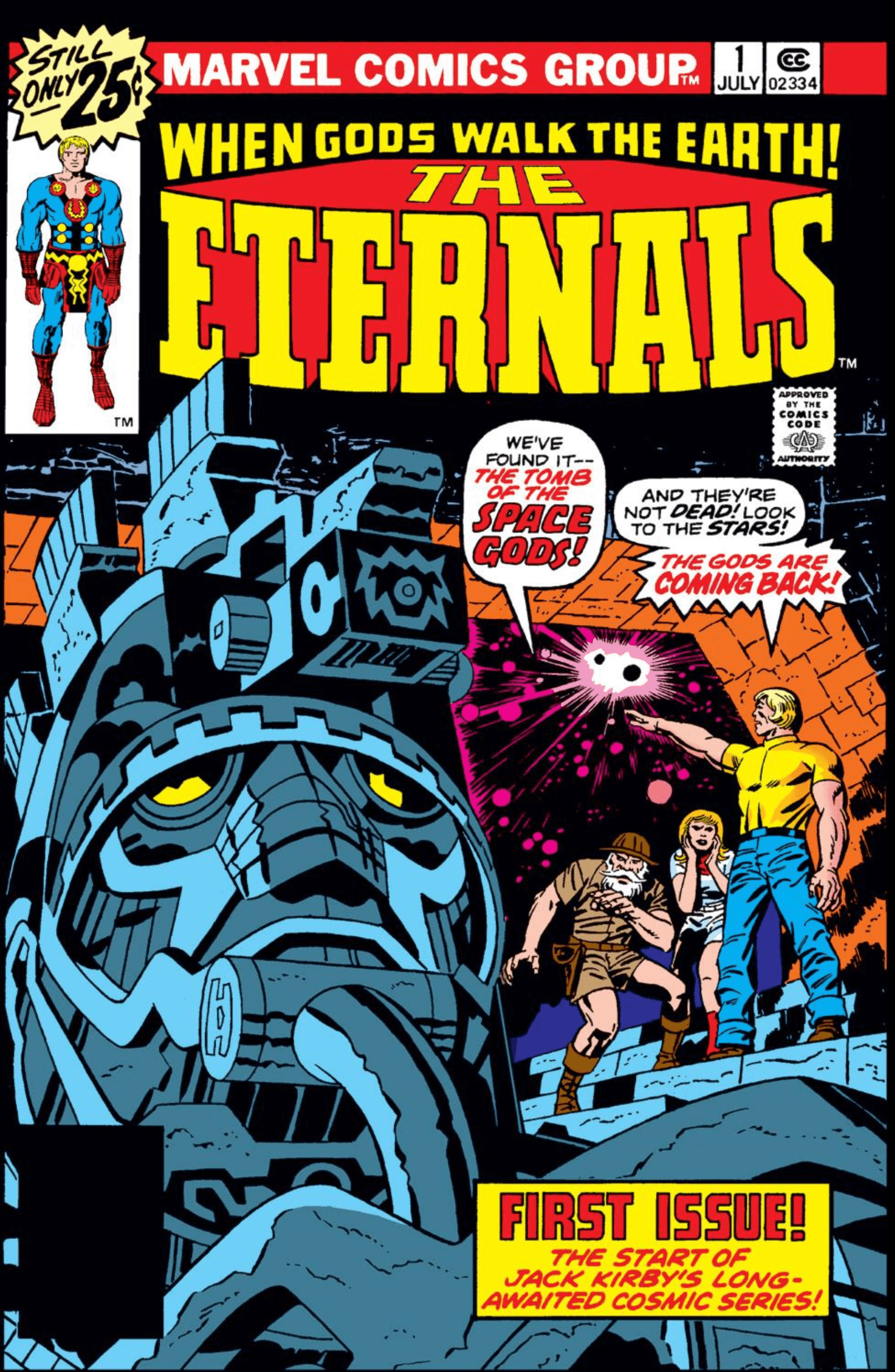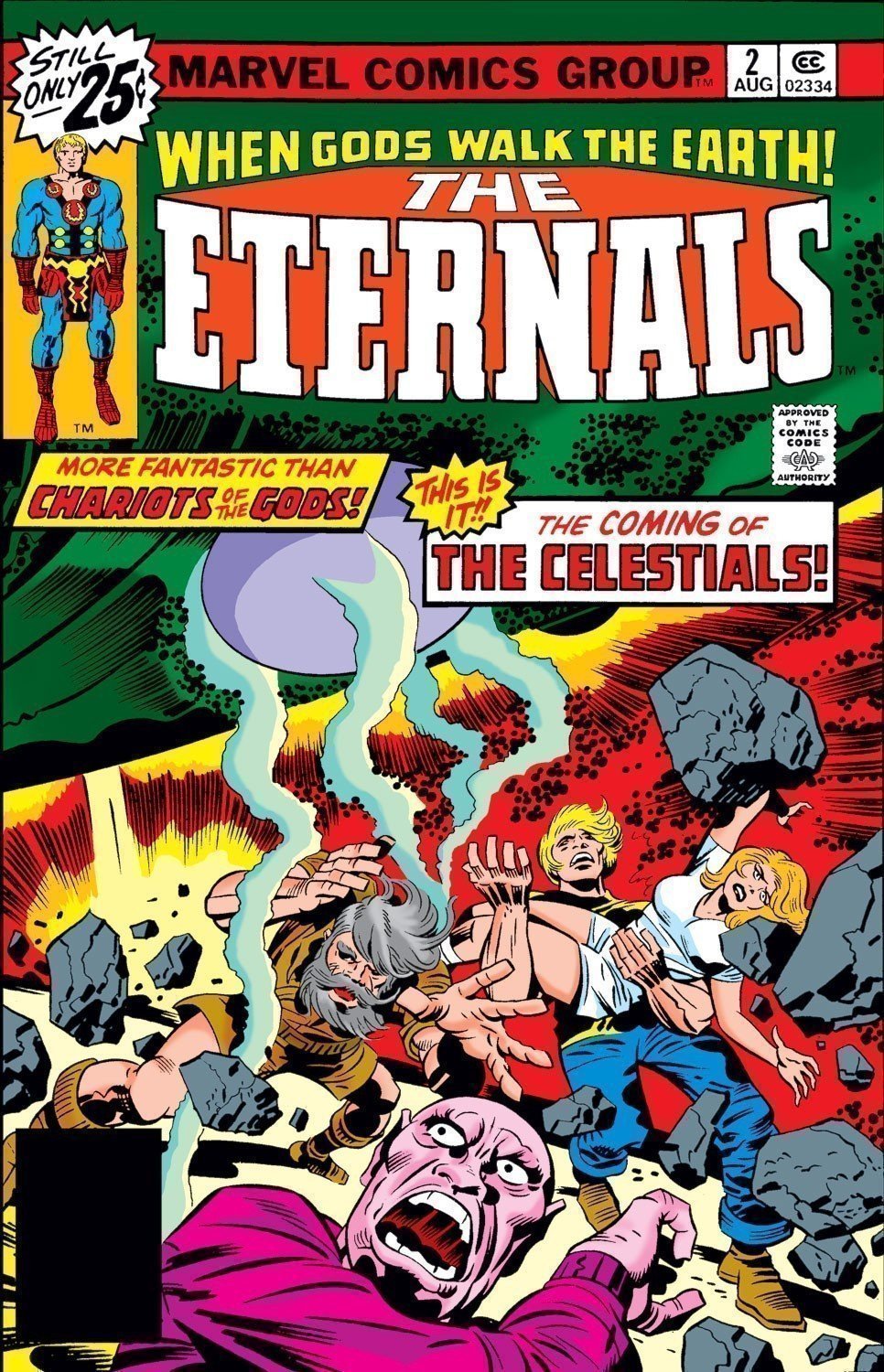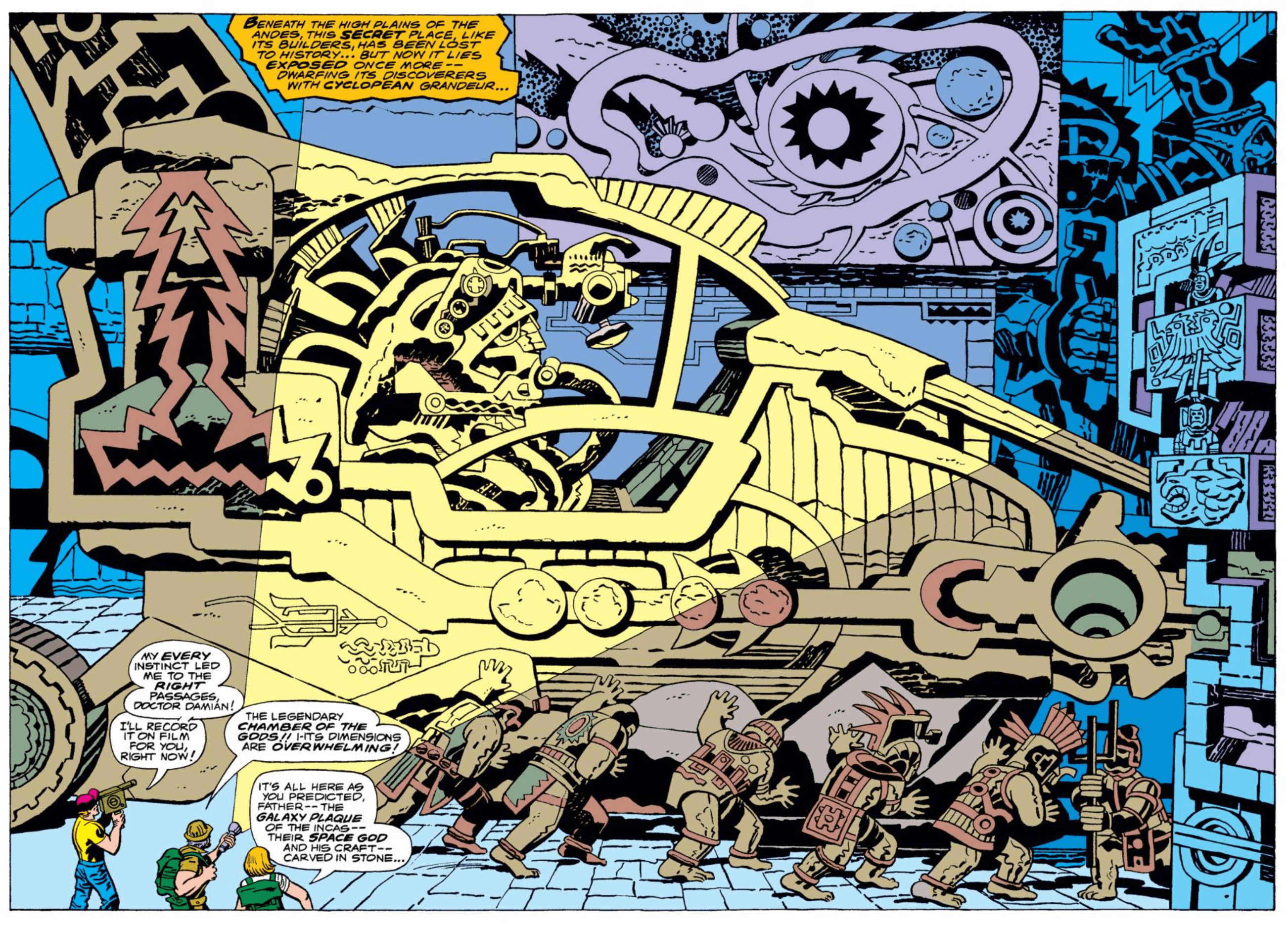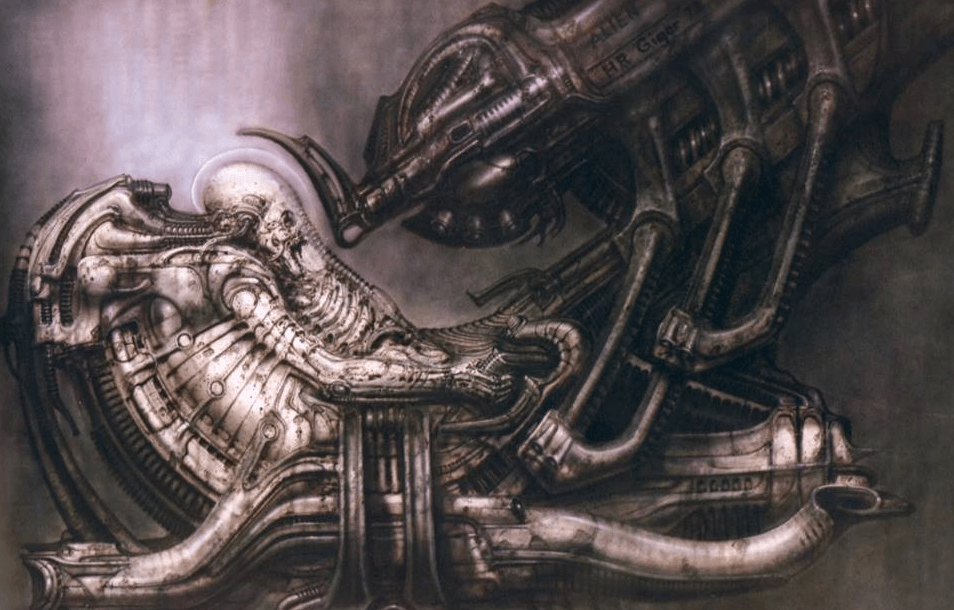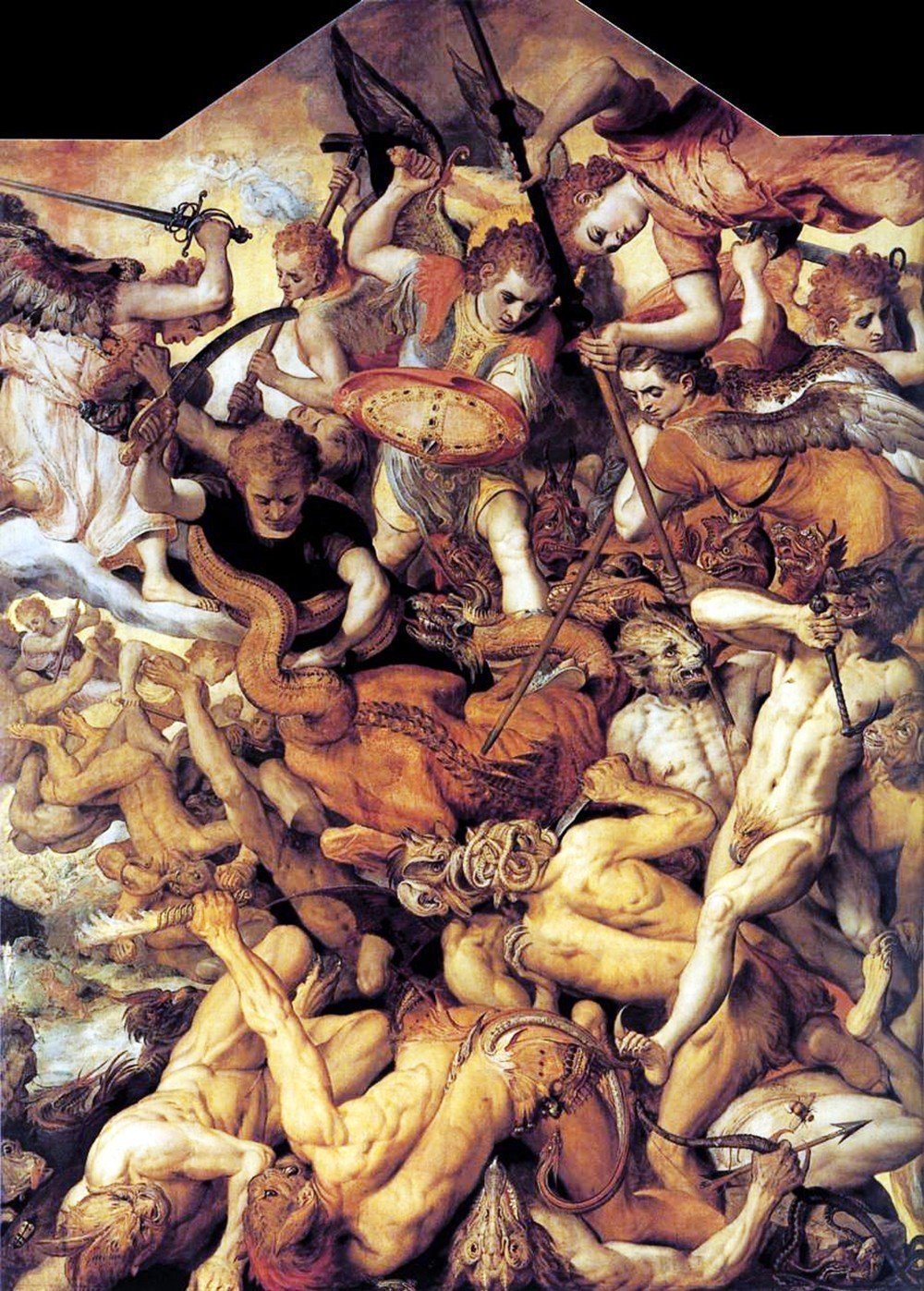Brief history of Ancient Aliens in Pop Culture & Comic Books (with Jack Kirby & Steve Ditko) by Alex Grand
Read Alex Grand’s Understanding Superhero Comic Books published by McFarland Books in 2023 with Foreword by Jim Steranko with editorial reviews by comic book professionals, Jim Shooter, Tom Palmer, Tom DeFalco, Danny Fingeroth, Alex Segura, Carl Potts, Guy Dorian Sr. and more.
In the meantime enjoy the show:
Welcome to CBH. Today we’re talking about a topic that’s enchanted and mystified historians and pseudo-historians for centuries and even possibly millennia. Ancient aliens or ancient astronauts are thought to have been extraterrestrials that visited Earth before its recorded written history and influenced early mankind and shaped its mythologies.
There are many debates that the angels and demons of several religious texts represent these extraterrestrials, and although there is a lot of awareness of this as a genre, it actually had a small, humble beginning in the 20th century, which eventually made its way into comic books.
The first of the ancient aliens books in the 20th century appeared to be The Gods of Pegana by Lord Dunsany in 1905, who created a pantheon of horrific gods where the chief deity, Mana-Yood-Sushai maintains a sleep by a lesser god so that the world may avoid the apocalypse that will surely happen when he awakens.
H.P. Lovecraft is thought to have read this story by Lord Dunsany, as well as the tale of the undersea god, the Kraken, and publicized the genre of ancient aliens coming to Earth long before our recorded history and to have in some way become the gods that humanity, in some shape or form, have worshiped. Lovecraft’s 1926 story, The Call of Cthulhu, premiered in the February 1928 issue of Pulp magazine, Weird Tales.
He mentions this theme in several of his writings, but Call of Cthulhu is probably the most famous one. His short story is about an ancient giant psychic squid-faced being that dreamt under the oceans and was a source of deviant tribal worship as well as a source of all human anxiety. In the Lovecraft-verse, this was just one of several stories of ancient demonic gods that walked the Earth before recorded history and influenced mankind in its early stages.
In 1941, Jack Kirby and Joe Simon discuss an island of the gods during prehistoric times in Tuk Caveboy in Captain America Comics number one. Tuck is a story of the dark, prehistoric ages and his search to find these enchanted gods of those times. The island of the gods is called Attilan, what Jack Kirby and Stanley would later say is the home of the Inhumans.
The Alien movie in 1979 and its prequel, Prometheus 2012 have some intriguing imagery of the Ancient Aliens that visited earth and other planets in their primordial history.
Space War 5, 1960 has a Venusian story with art by Steve Ditko of a similar concept of a bald humanoid alien visiting earth in an exoskeleton 100,000 years ago.
Check out the Motion Comic made here at CBH of this Ditko Ancient Alien story:
Arthur C. Clarke, famous 20th century science fiction writer, wrote The Sentinel in 1948, and this short story was published in 1951 as Sentinel of Eternity, about a tetrahedron device that is millions of years old, left on the moon by ancient aliens and found by astronauts.
The story speculates that this device would send a signal to its original creators if humans ever stumbled upon it. This was the early seed story in which Arthur C. Clarke would write his later book, 2001: A Space Odyssey.
There was also some speculation at this time that the Easter Island stone men were also a leftover of ancient aliens. Jack Kirby portrays the Easter Island stone men in House of Mystery 85, 1959, then later in 1961 for Marvel’s Tales to Astonish 16. He would then employ those same Easter Island stone men as alien invaders from Saturn in Journey Into Mystery 83, 1962.
A variety of alien sci-fi books are written in the meantime, until the concept of ancient aliens as a potentially real phenomenon and not just fiction, starts to take life in the 1960s, which many would classify as a trippy time. In 1960, ancient aliens were written about in the French book, The Morning of the Magicians, by Louis Pauwels and Jacques Bergier, which discusses the potential truth that ancient aliens could actually be a real, real thing.
In almost a silly way, the potential truth that various outlandish things could have happened, including the Peruvian naska lines and how they could have been placed by ancient beings and a giant race that once ruled the Earth, among other speculations, is discussed as not a preachy truth but rather as a thought-provoking question. This book, however, inspired Robert Charroux’s 1963 100,000 Years of Man’s Unknown History,
which was the first in a series of books by Robert Charroux that pushed the concept of ancient aliens as an actual truth rather than a fiction, and some have criticized it as a pseudo-history. Robert Charroux looked at English artifacts as well as the Peruvian Nazca lines and suggested that white-skinned gods lived in Hyboria on Earth centuries ago and showed similarities in mythological works between ancient Guatemala, Greek and ancient Celtic texts. This French book by Charroux was very influential and made its way to several readers of the time, notably Herge, Belgic French comic book maker, who inserted the ancient alien concept into his Tintin album, Flight 714 to Sydney, in the year 1967.
This Tintin chapter discussed ancient aliens and the artifacts left behind from old Earth civilizations in tropical caves. The story has Tintin and his friends seeing signs of UFOs on the ancient cave writings, and they have a psychic encounter with aliens in the story. In Thor 146, 1967, in the same year,
Jack Kirby brings back his Tuk Attilan 1941 concept into his Origin of the Inhumans. Jack Kirby and Stan Lee made this story as an explanation of how the space race, the Kree, left sentinels and artifacts on Earth, including their experiments on early humans, creating the Inhumans. Robert Charroux’s book also influenced a Swiss writer, Eric von Daniken, who wrote his famous book, Chariots of the Gods.
This book uses archeological finds, such as the Easter Island stone men, Nazca lines in Peru, Stonehenge, Egyptian pyramids, as well as ruins and statues from various countries are all inspired by ancient aliens that visited Earth. The books on the topic start to be pushed as an absolute historical truth during the 1960s rather than just a fiction, and regardless, the notion becomes more and more accepted as a possibility by the mainstream in the later 1960s.
In 1968, another book and film comes out by Arthur C. Clarke, who took his short story, Sentinel of Eternity, and created the much more famous and vastly more developed 2001: A Space Odyssey.
This book and film by Arthur C. Clarke takes the sentinel notion further, that the ancient aliens sent gene-enhancing probes to Earth in its pre-evolved apelike state and stimulated evolution into humans. Then the same ancient aliens left a probe on the moon to alert them when humans are able to interstellar space jump to the moon to find it. This contact stimulates further space exploration, which leads the main character to become evolved into a star child through more alien intervention. Both as a book and as a film, this story, along with Chariots of the Gods, pushed the ancient alien theory to the forefront of pop culture and public curiosity well into the 1960s. This starts to show up in more comic book companies in the 1970s, for example, Marvel Preview number one, Man Gods From Beyond the Stars, July 1975.
This beautiful cover by Neal Adams shows an extraterrestrial visiting cavemen and clearly making a strong impression as he walks out of his UFO.
In 1976, Jack Kirby expresses himself and his fascination with mythologies and ancient aliens even further with two significant comic book works. One is his adaptation of the 1968 ancient alien film, 2001: A Space Odyssey, in a large size treasury edition comic book.
It’s a great companion piece to the book and the film and is much easier to understand. This would go on into a comic book series that transitioned into his Machine Man series. Jack Kirby’s second 1976 work was his 19-issue run on Eternals, which expanded on his Kree Inhuman mythology with the Celestials, an ancient alien race, and their experiments with evolution on early man.
The cover refers to the tomb of the space gods with the reference that the gods are coming back, which becomes a recurring theme with ancient alien theorists trying to guess if the ancient aliens were here, where did they go, why did they leave, and will they come back? When will they come back?
The cover to issue number two by Jack Kirby also has a dialogue blurb that states that the issue is even more fantastic than Chariots of the Gods, which is a clearcut description of what inspired Jack to make this series. The inside of the first issue stands out with much of the imagery used in the ancient alien books, like caves with ancient statues and writings that suggest the existence of ancient aliens. This impressive and staggering imagery shows a statue of an ancient alien in a spaceship, likely in homage to Chariots of the Gods.
There is an interesting similarity to the statue found in the 1967 Tintin story as well.
This ancient alien theme continues in the 1979 Alien film by Ridley Scott, and further continues into the modern Prometheus films, where the engineers have a similar setup to Kirby and other references to the ancient alien and ancient astronauts. Ridley Scott has beautifully combined this fascination in a civilized ancient alien sci-fi concept with the H.P. Lovecraft sci-fi monster horror concept to jumpstart a very fun franchise.
Maybe it’s all just a metaphor for angels and demons, or maybe it’s the other way around. Regardless, whether ancient aliens are real or not, there is no debating that it has now become a pop culture genre that has much presence in books, films and comic books. It’s a strong concept for the stories in the 20th century, and judging from the positive reception to the new Ridley Scott films, it is still a topic that we, as humans, can’t help but feel a strong fascination.
Cheers.
Join us for more discussion at our Facebook group
check out our CBH documentary videos on our CBH Youtube Channel
get some historic comic book shirts, pillows, etc at CBH Merchandise
check out our CBH Podcast available on Apple Podcasts, Google PlayerFM and Stitcher.
Sentinel of Eternity ©1951 Avon Periodicals, The Gods of Pegana – Public domain, Weird Tales ©Nth Dimension Media, The Morning of the Magicians ©1960 Editions Gallimard, One Hundred Thousand Years of Man’s Unknown History ©1971 Berkley Medallion Books, Tin Tin Flight 714 to Sydney © Casterman, Paris and Tournai with Text by Methuen Childrens Books, Chariots of the Gods ©1963 G. P. Putnam’s Sons, 2001: A Space Odyssey ©MGM, Captain America Comics ©Marvel, The Mighty Thor ©Marvel, Eternals ©Marvel, Aliens ©20th Century Fox, 1554 Frans Floris – Rebellious Angels may also be subject to copyright.
Photos © Their Respective Copyright Holders
Use of images are not intended to infringe on copyright, but merely used for academic purpose.










